-
ICMag with help from Landrace Warden and The Vault is running a NEW contest in November! You can check it here. Prizes are seeds & forum premium access. Come join in!
You are using an out of date browser. It may not display this or other websites correctly.
You should upgrade or use an alternative browser.
You should upgrade or use an alternative browser.
Repuk Goes to the Jungle (2020)
- Thread starter repuk
- Start date
Time to Build
Time to Build
Time is running out to set the flowering room, jungle is getting unmanageable ...
...
Good thing is I already sourced the materials, as the country is shutting down and people has to stay at their homes due to covid19, no more hardware store trips for the next two weeks...
Here lumber is not as cheap as in America, so will use waterproof plasterboard and metal sheet profiles (blue lines).
Door and frame are made from steel profiles too... good thing is they're A+ in thermal rating, my plan is to build a cold room of sorts as insulated as possible.
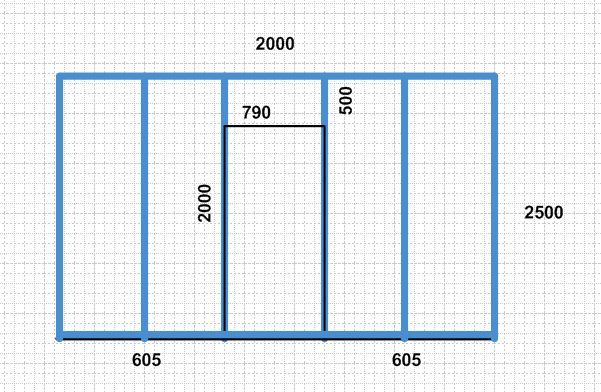
The plan: don't want to drill the floor, which is covered with antique ceramic tiles made to absorb water... So will fix a profile to the faux ceiling with special hangers, and the vertical ones drilled to the walls to them; then rivet door frame to additional vertical profiles to the roof/floor ones, and screw all the rest as usually done with plasterboards.
The result:
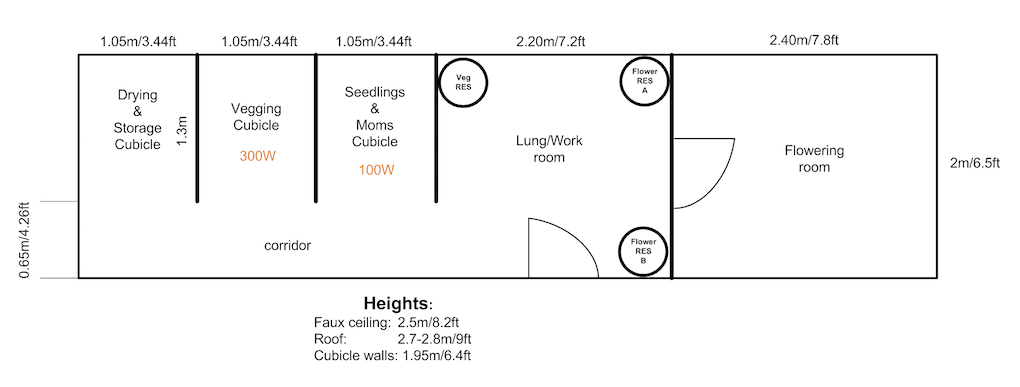
I'm still deciding about extraction/intraction and on whether to seal the room or not to use CO2.
My plan is approach extraction/intraction on the whole space as a whole, using the open space as lung room.
I will possibly close a space on the cubicles for males.
Time to Build
Time is running out to set the flowering room, jungle is getting unmanageable
 ...
... Good thing is I already sourced the materials, as the country is shutting down and people has to stay at their homes due to covid19, no more hardware store trips for the next two weeks...
Here lumber is not as cheap as in America, so will use waterproof plasterboard and metal sheet profiles (blue lines).
Door and frame are made from steel profiles too... good thing is they're A+ in thermal rating, my plan is to build a cold room of sorts as insulated as possible.
The plan: don't want to drill the floor, which is covered with antique ceramic tiles made to absorb water... So will fix a profile to the faux ceiling with special hangers, and the vertical ones drilled to the walls to them; then rivet door frame to additional vertical profiles to the roof/floor ones, and screw all the rest as usually done with plasterboards.
The result:
I'm still deciding about extraction/intraction and on whether to seal the room or not to use CO2.
My plan is approach extraction/intraction on the whole space as a whole, using the open space as lung room.
I will possibly close a space on the cubicles for males.
Update
Update
Struggling a little... RO decided to fail, just got a replacement and some more knowledge about them, so will concoct something useful for growing usage as sustainable as possible.
Never researched hydraulics... there's always something new to learn palindrome's workshop, unnamedmike's left a mark on me. Loads of stuff to learn.
palindrome's workshop, unnamedmike's left a mark on me. Loads of stuff to learn.
Building the flowering room. This is so different... being able to enjoy time around your plants (plenty of space) brings a new dimension to the passion. I find myself fiddling around toklng, sipping beer and thinking... and enjoying the process.
These three little plants are enjoying their new life outdoors... today under a roof as it's raining non stop, ss it should be in Spain's Spring!... but this is coco+salts, I prefer to choose when to give 'em lean water at ths size. Once they're big girls I worry no longer.
Lebanese
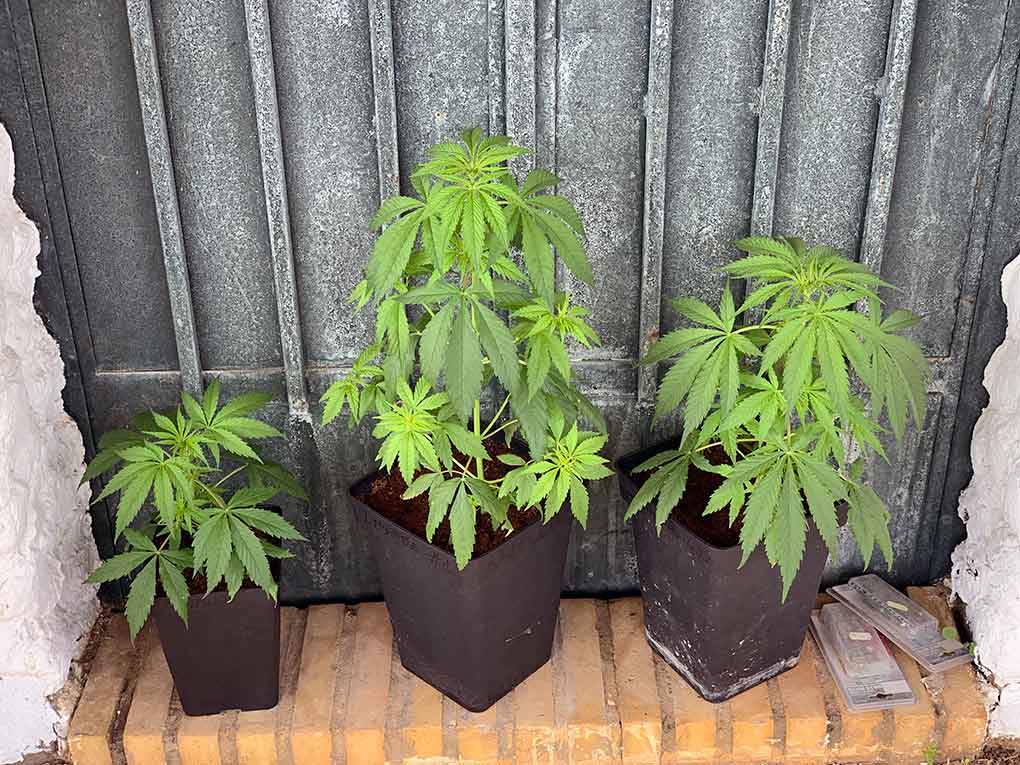
#3, #1 and #2.
Update
Struggling a little... RO decided to fail, just got a replacement and some more knowledge about them, so will concoct something useful for growing usage as sustainable as possible.
Never researched hydraulics... there's always something new to learn
 palindrome's workshop, unnamedmike's left a mark on me. Loads of stuff to learn.
palindrome's workshop, unnamedmike's left a mark on me. Loads of stuff to learn.Building the flowering room. This is so different... being able to enjoy time around your plants (plenty of space) brings a new dimension to the passion. I find myself fiddling around toklng, sipping beer and thinking... and enjoying the process.
These three little plants are enjoying their new life outdoors... today under a roof as it's raining non stop, ss it should be in Spain's Spring!... but this is coco+salts, I prefer to choose when to give 'em lean water at ths size. Once they're big girls I worry no longer.
Lebanese
#3, #1 and #2.
Time is running out to set the flowering room, jungle is getting unmanageable...
Good thing is I already sourced the materials, as the country is shutting down and people has to stay at their homes due to covid19, no more hardware store trips for the next two weeks...
Here lumber is not as cheap as in America, so will use waterproof plasterboard and metal sheet profiles (blue lines).
Door and frame are made from steel profiles too... good thing is they're A+ in thermal rating, my plan is to build a cold room of sorts as insulated as possible.
View Image
The plan: don't want to drill the floor, which is covered with antique ceramic tiles made to absorb water... So will fix a profile to the faux ceiling with special hangers, and the vertical ones drilled to the walls to them; then rivet door frame to additional vertical profiles to the roof/floor ones, and screw all the rest as usually done with plasterboards.
The result:
View Image
I'm still deciding about extraction/intraction and on whether to seal the room or not to use CO2.
My plan is approach extraction/intraction on the whole space as a whole, using the open space as lung room.
I will possibly close a space on the cubicles for males.
Love the grow area
Using something similar for my second indoor
I tried yesterday to figure out what you mean by intraction my friend
Is it air circulation you referring too R.?
bsgospel: looks like an electronic flow restrictor valve is to blame and the booster seems to require a rebuild. Bad items to source quick these days, so went with the cheapest/simplest complete RO system with booster pump and all passive ASO valves and restrictor I could source the fastest. Only electronic sensor it has is the low pressure switch to switch off the diaphragm booster pump if no water.
Previous one costed the same, but was a deal... has components like three times better: just by looking at the pump size, pump PSU and solenoid valves, etc.
In any case now I have enough parts to assemble two, or assemble a "beefed up" one with two membranes, second one in series with the brine for more efficiency. And spare filters, parts... Looks like the most self-sustainable implementation would be replacing the active booster pump with a permeate one, wich is basically a passive pump operated with the hydraulics of the system... need to learn more.
RED_1: Yes! Intraction: I meant bringing fresh (lung in this case) air into the flowering room. I guess I just made up the word from Spanish, should be Intake, sorry.
Previous one costed the same, but was a deal... has components like three times better: just by looking at the pump size, pump PSU and solenoid valves, etc.
In any case now I have enough parts to assemble two, or assemble a "beefed up" one with two membranes, second one in series with the brine for more efficiency. And spare filters, parts... Looks like the most self-sustainable implementation would be replacing the active booster pump with a permeate one, wich is basically a passive pump operated with the hydraulics of the system... need to learn more.
RED_1: Yes! Intraction: I meant bringing fresh (lung in this case) air into the flowering room. I guess I just made up the word from Spanish, should be Intake, sorry.
WIP
WIP
Almost finished...
Updated floor plan:
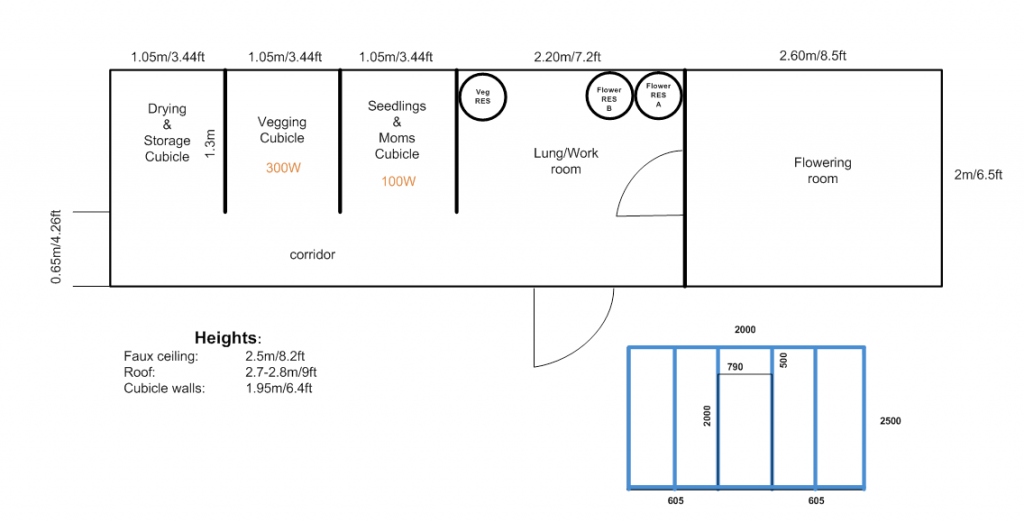
The main Room external door opens to the outside... I happened to mock up the (new flowering room) door in reverse by mistake, realizing in fact seemed to be the best position, not only maximizes space inside the flowering room, but due to the fact it leaves all corridors/rooms clear of any obstacles, including outdoor access, is the perfect position, so installed it this way instead.
Only a small triangle of space is lost when the flower room door is opened, and it doesn't block access to anywhere
The space
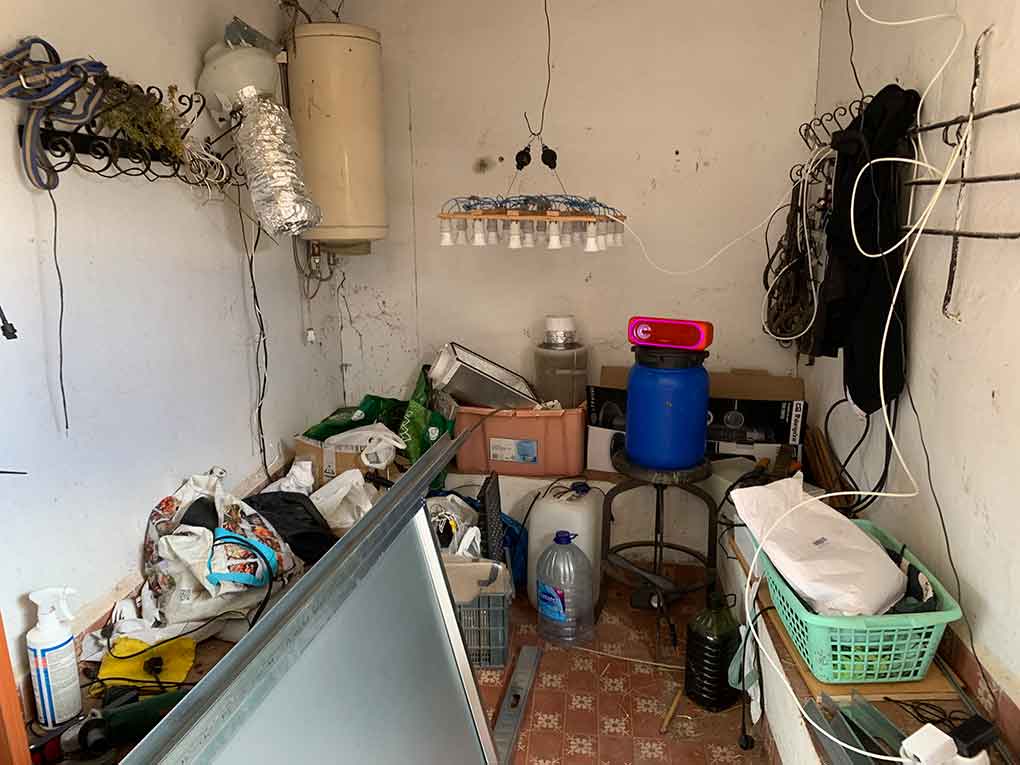
Framing fixed, walls are already almost done.
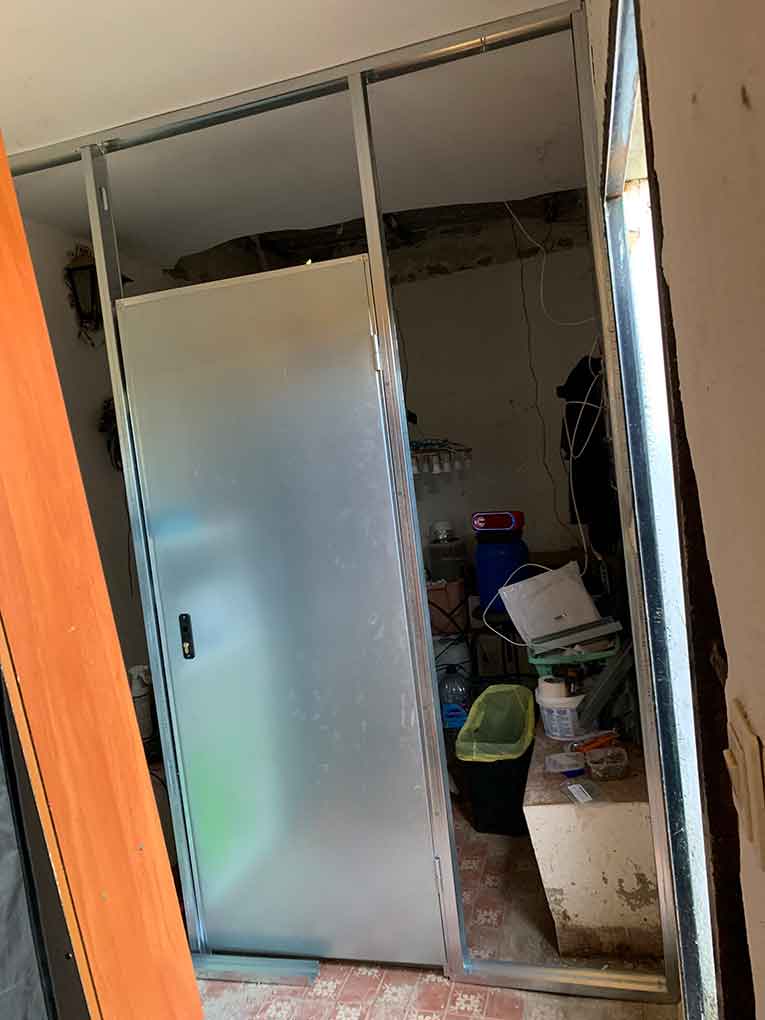
View from the inside:
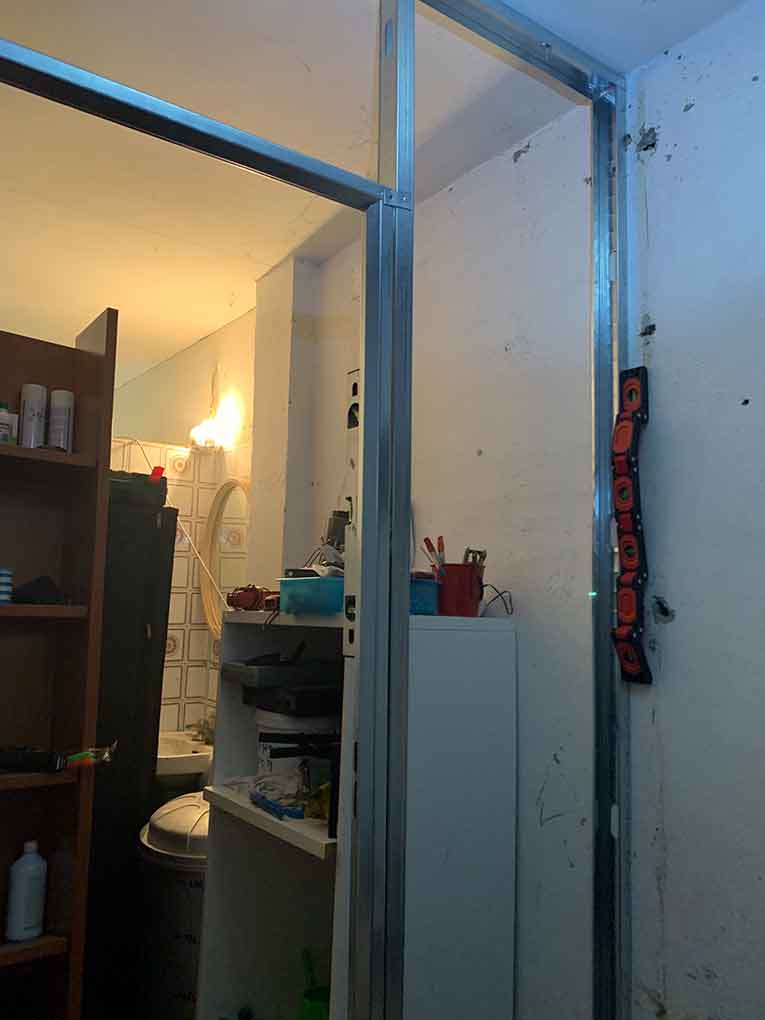
Nice 14m3/500 cubic feet flowering space!!
WIP
Almost finished...
Updated floor plan:
The main Room external door opens to the outside... I happened to mock up the (new flowering room) door in reverse by mistake, realizing in fact seemed to be the best position, not only maximizes space inside the flowering room, but due to the fact it leaves all corridors/rooms clear of any obstacles, including outdoor access, is the perfect position, so installed it this way instead.
Only a small triangle of space is lost when the flower room door is opened, and it doesn't block access to anywhere

The space
Framing fixed, walls are already almost done.
View from the inside:
Nice 14m3/500 cubic feet flowering space!!
It's ok my friend.In a "long room" like that, similar to mine(parallelogram),to get air circulation working proper, extraction should be placed in the middle.If possible, air in, should be coming from, both left and right walls of room.That advice I got from my grow shop people, thought I'll share it with youbsgospel: looks like an electronic flow restrictor valve is to blame and the booster seems to require a rebuild. Bad items to source quick these days, so went with the cheapest/simplest complete RO system with booster pump and all passive ASO valves and restrictor I could source the fastest. Only electronic sensor it has is the low pressure switch to switch off the diaphragm booster pump if no water.
Previous one costed the same, but was a deal... has components like three times better: just by looking at the pump size, pump PSU and solenoid valves, etc.
In any case now I have enough parts to assemble two, or assemble a "beefed up" one with two membranes, second one in series with the brine for more efficiency. And spare filters, parts... Looks like the most self-sustainable implementation would be replacing the active booster pump with a permeate one, wich is basically a passive pump operated with the hydraulics of the system... need to learn more.
RED_1: Yes! Intraction: I meant bringing fresh (lung in this case) air into the flowering room. I guess I just made up the word from Spanish, sorry.
Thanks RED_1! I'm trying not to overengineer as I usually fall into... while reusing the max of my equipment.
My initial thought was to place the scrubber and a 340M3/h (200CFM) axial fan inside the flowering room, exhausting to the lung room. Then place a future AC unit in the lung room.
So air intake to the flowering room will be passive (and placed lower vs the exhaust)
And also vegging/moms would benefit from the AC.
Trying to avoid the use of ducts to the minimum, air movement inside the "long room" will be handled by oscillating fans.
Again this is the first time I'm assembling something like this, so any tips/pointers/corrections will be welcomed!
My initial thought was to place the scrubber and a 340M3/h (200CFM) axial fan inside the flowering room, exhausting to the lung room. Then place a future AC unit in the lung room.
So air intake to the flowering room will be passive (and placed lower vs the exhaust)
And also vegging/moms would benefit from the AC.
Trying to avoid the use of ducts to the minimum, air movement inside the "long room" will be handled by oscillating fans.
Again this is the first time I'm assembling something like this, so any tips/pointers/corrections will be welcomed!
The structural drawing looks good. Good luck. 

Flowering Room: Air Calculations
Flowering Room: Air Calculations
I'm afraid the inline fans I have fall too short for a 14m3/500 cubic feet flowering space.
I've changed my mind too, will be scrubbing/exhausting from flowering room to the outside, and then use either passive/active intake from the lung room.
Depending on needs, may add an AC unit in the lung room, though my goal is to avoid running the flower room in summer, will focus on the outdoor by then.
I usually aim for systems able to handle 1.5-2 air exchanges per minute, oversized enough (scrubber too) to cope with the scrubber drag.
The most powerful inline I have (340m3/h), without scrubbing, could cope with 1 air exchange each three minutes... I think this is on the verge as scrubbing will be required, even while the scrubber is a 600m3/h Can Lite that should not impact efficiency that much, we would be falling short of my minimum goal of 1 air exchange per minute.
While this setup was conceived for a DR120 tent (roughtly 3 cubic meters) and was too powerful for this (had to run it at 50%), the new flowering space is almost five times that volume, so doesn't tick the "oversize to 1.5-2 times the minimum requirement" for me.
So thinking on getting a RVK Sileo 250-E2-L + a 1500m3/h CAN Filter, the rationale: 250-E2-L can move 1086m3/h. This means at 100% 18m3 per minute. Factor in the scrubber, say 20-25%, and we're in 14m3 territory: 1 air exchange per minute.
I consider this to be absolute maximum regime I'll use (more I consider wind-tunnel territory), I usually aim for a complete air exchange each 2-3 minutes.
To complete this plan, in addition to the 250-E2-L I'll use the old 340m3/h + regulator for active intake from the lung room and will leave the 220m3/h RVK + scrubber on the original 80x80x180 tent I had them installed, which I'll use for drying.
What do you guys think? I may use an HPS (215-410W), but the rest of lights are all LED based, so not that much heat generated.
Flowering Room: Air Calculations
I'm afraid the inline fans I have fall too short for a 14m3/500 cubic feet flowering space.
I've changed my mind too, will be scrubbing/exhausting from flowering room to the outside, and then use either passive/active intake from the lung room.
Depending on needs, may add an AC unit in the lung room, though my goal is to avoid running the flower room in summer, will focus on the outdoor by then.
I usually aim for systems able to handle 1.5-2 air exchanges per minute, oversized enough (scrubber too) to cope with the scrubber drag.
The most powerful inline I have (340m3/h), without scrubbing, could cope with 1 air exchange each three minutes... I think this is on the verge as scrubbing will be required, even while the scrubber is a 600m3/h Can Lite that should not impact efficiency that much, we would be falling short of my minimum goal of 1 air exchange per minute.
While this setup was conceived for a DR120 tent (roughtly 3 cubic meters) and was too powerful for this (had to run it at 50%), the new flowering space is almost five times that volume, so doesn't tick the "oversize to 1.5-2 times the minimum requirement" for me.
So thinking on getting a RVK Sileo 250-E2-L + a 1500m3/h CAN Filter, the rationale: 250-E2-L can move 1086m3/h. This means at 100% 18m3 per minute. Factor in the scrubber, say 20-25%, and we're in 14m3 territory: 1 air exchange per minute.
I consider this to be absolute maximum regime I'll use (more I consider wind-tunnel territory), I usually aim for a complete air exchange each 2-3 minutes.
To complete this plan, in addition to the 250-E2-L I'll use the old 340m3/h + regulator for active intake from the lung room and will leave the 220m3/h RVK + scrubber on the original 80x80x180 tent I had them installed, which I'll use for drying.
What do you guys think? I may use an HPS (215-410W), but the rest of lights are all LED based, so not that much heat generated.
Progress Update
Progress Update
Didn't have much time lately to work on this, extractor and scrubber (Can Lite 2500m3/h) ordered, shall arrive tomorrow or Monday.
Bad news... I miswired (while sober) the COBs and possibly fried them . So pissed off I haven't tested them yet.
. So pissed off I haven't tested them yet.
Flowering Room in progress (but still still 18/6, pending lightproofing):
Deployed the 300W SIL and the HPS set to 275W... (plants will benefit from some heating still).
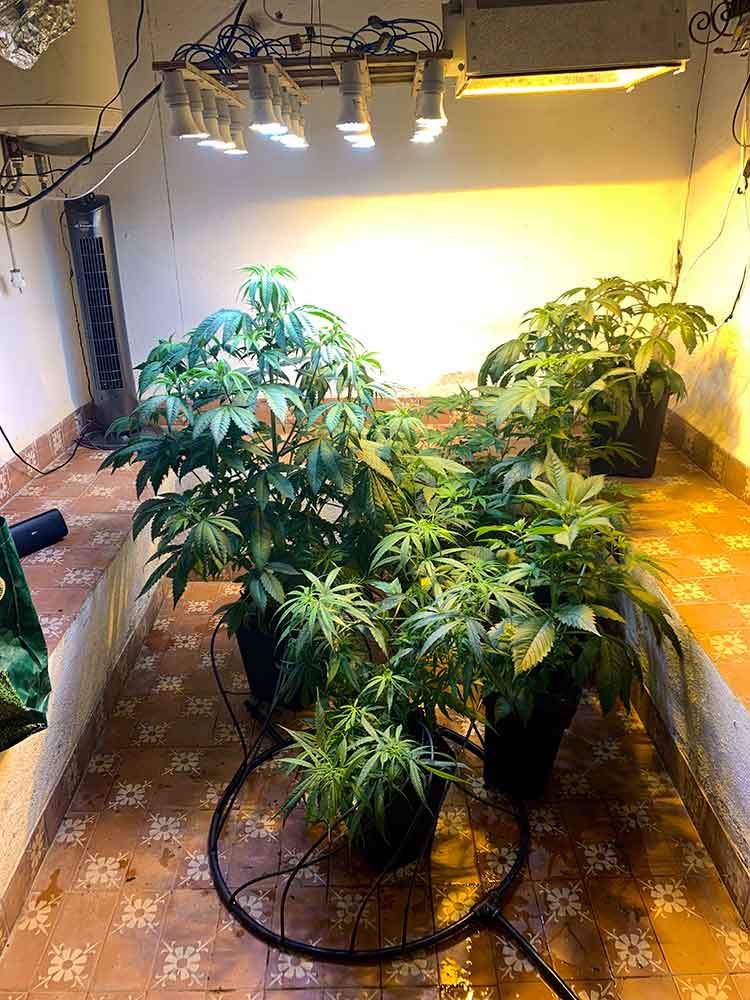
Had temporarily connected the previous irrigation I had to feed them, and had to place them closer to each others for the tubes to reach, sorry for the mess:
The big one: Kali China (f). Foreground: trained Old Timer's Haze. On its right, Satori. Up on its right: C5 Haze x Kali China (f). Middle: (not seen Violeta fem. Background (not seen) Oaxaca 79 x Panama (f).
Have some concerns regarding size... flowering time will be hard. Hope Kali China doesn't stretch too much, main stem has the girth of a forefinger and those lovely Kali Mist stripes:
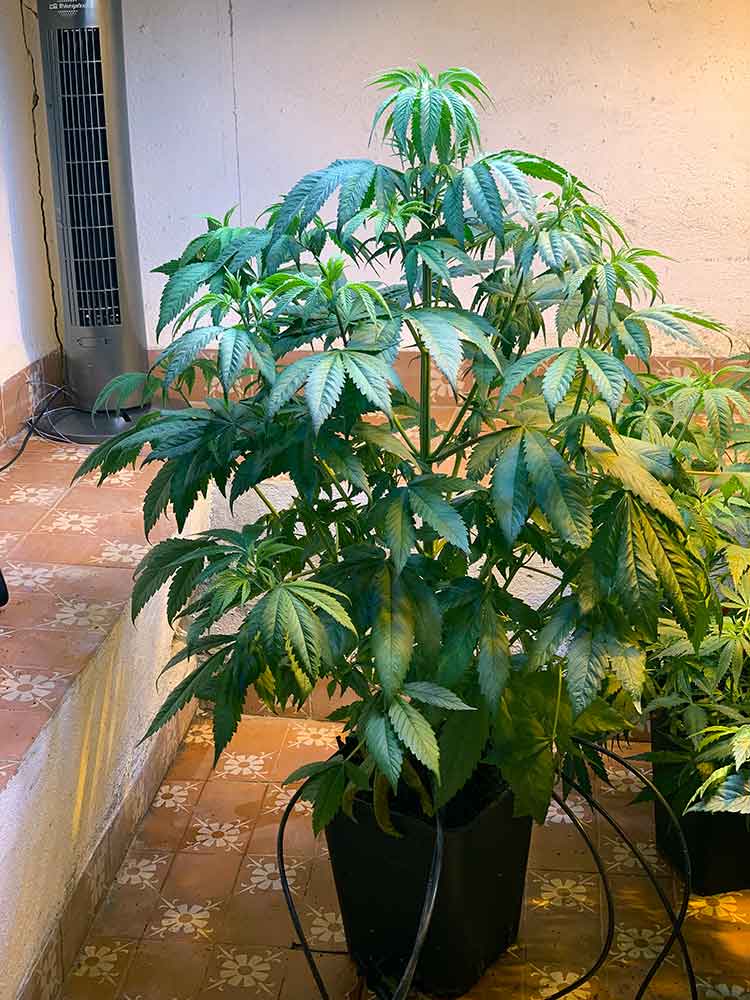
Definitely won't mind a bumper crop from her
Remaining plants in veg:
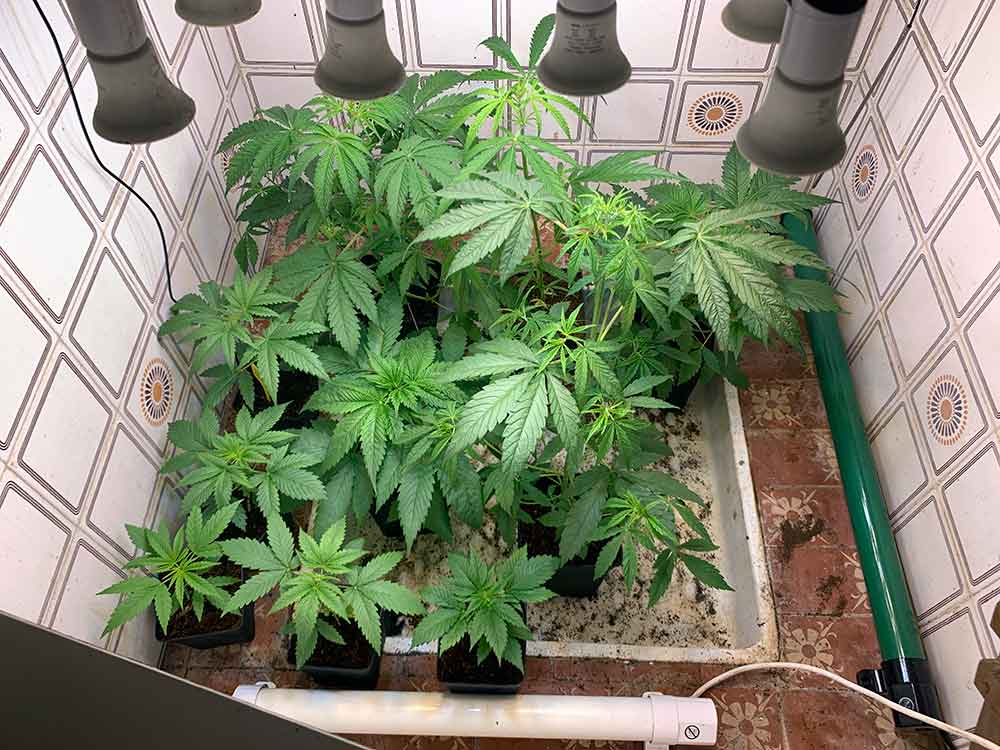
2 Bigger ones: Nepal Mists (reg). Next bigger one: Kalichakra #2. next biggest: Old Timers Haze (reg) 2 Red Sapphires (fem), and smaller Kalichakra, and Satori (regs). Orient Express x Nep Jam (fem), Purple Pakistani Haze (fem)
Seedlings Tent:
Tikal x Panama and Zamaldelica x Panama (fems).
Progress Update
Didn't have much time lately to work on this, extractor and scrubber (Can Lite 2500m3/h) ordered, shall arrive tomorrow or Monday.
Bad news... I miswired (while sober) the COBs and possibly fried them
 . So pissed off I haven't tested them yet.
. So pissed off I haven't tested them yet.Flowering Room in progress (but still still 18/6, pending lightproofing):
Deployed the 300W SIL and the HPS set to 275W... (plants will benefit from some heating still).
Had temporarily connected the previous irrigation I had to feed them, and had to place them closer to each others for the tubes to reach, sorry for the mess:
The big one: Kali China (f). Foreground: trained Old Timer's Haze. On its right, Satori. Up on its right: C5 Haze x Kali China (f). Middle: (not seen Violeta fem. Background (not seen) Oaxaca 79 x Panama (f).
Have some concerns regarding size... flowering time will be hard. Hope Kali China doesn't stretch too much, main stem has the girth of a forefinger and those lovely Kali Mist stripes:
Definitely won't mind a bumper crop from her

Remaining plants in veg:
2 Bigger ones: Nepal Mists (reg). Next bigger one: Kalichakra #2. next biggest: Old Timers Haze (reg) 2 Red Sapphires (fem), and smaller Kalichakra, and Satori (regs). Orient Express x Nep Jam (fem), Purple Pakistani Haze (fem)
Seedlings Tent:
Tikal x Panama and Zamaldelica x Panama (fems).
I've been missing this thread ... 
My RO need to be unmounted every X time due maintenance. Not just a filter change. A full clean, open the solid valves and clean, conectors, pipes, filter bottles, and clean everything.

My RO need to be unmounted every X time due maintenance. Not just a filter change. A full clean, open the solid valves and clean, conectors, pipes, filter bottles, and clean everything.
Update
Update
Thanks for the tip unnamedmike! will do so now that I don't have pressure as there's one in place working.
Thinking even on making a LoRa RO controller with https://www.dragino.com/products/lora-lorawan-end-node/item/138-lt-33222-l.html
BTW, dragino has also LoRa HATs for Arduino... the cool thing with LoRa is they allow you to communicate cheaply over incredible distances (less indoors obviously). And you can also send commands remotely (downlinks) to them.
Slow but steady progress on the flowering room. Reused some metal profiles/no longer used kitchen wood panel scraps to make a registrable intake panel:
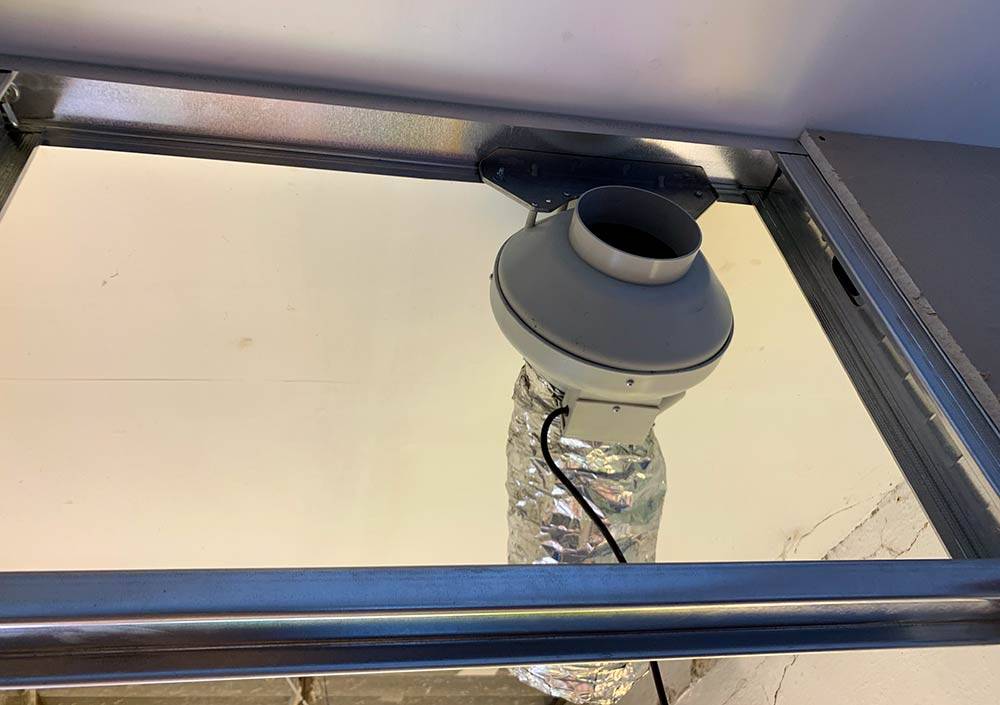
Profiles were drilled, and riveted to existing ones. Then used nuts/bolts to fix Intake fan bolted to the frame, and fixed long bolts to serve as fixing points for the wood panel.
Shall receive the rest on Monday hopefully (phew!!! growshops and non-essential businesses have been closed by government until new order last Saturday!)
Violeta (fem)
What a beauty....
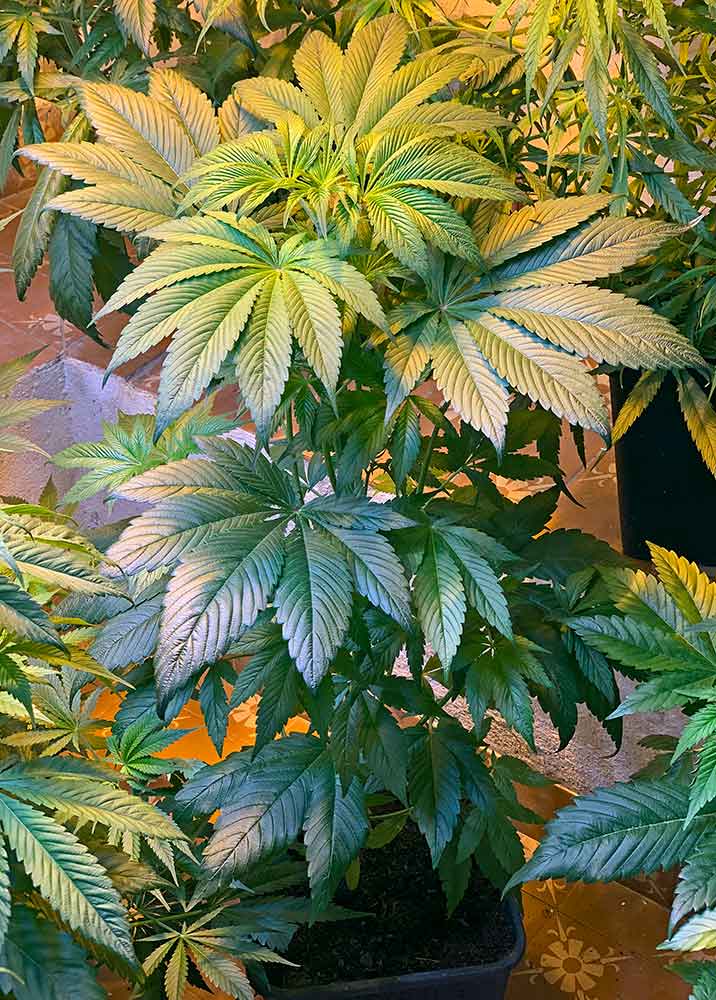
Satori #1
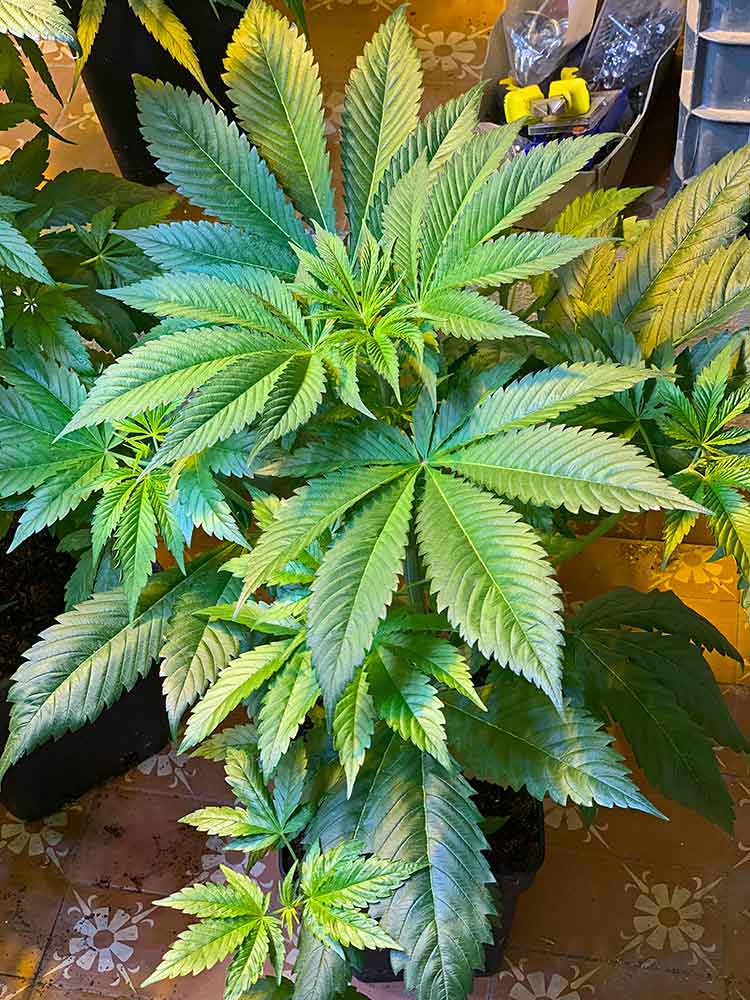
Not FIMmming Topping nor training for Indica growth leaning plants this time. Took cuts and will be trying growing in SOG style to find outstanding mothers, then run them outdoors to complete yields, or indoor flat canopy training for production on selected cuts.
Update
Thanks for the tip unnamedmike! will do so now that I don't have pressure as there's one in place working.
Thinking even on making a LoRa RO controller with https://www.dragino.com/products/lora-lorawan-end-node/item/138-lt-33222-l.html
BTW, dragino has also LoRa HATs for Arduino... the cool thing with LoRa is they allow you to communicate cheaply over incredible distances (less indoors obviously). And you can also send commands remotely (downlinks) to them.
Slow but steady progress on the flowering room. Reused some metal profiles/no longer used kitchen wood panel scraps to make a registrable intake panel:
Profiles were drilled, and riveted to existing ones. Then used nuts/bolts to fix Intake fan bolted to the frame, and fixed long bolts to serve as fixing points for the wood panel.
Shall receive the rest on Monday hopefully (phew!!! growshops and non-essential businesses have been closed by government until new order last Saturday!)

Violeta (fem)
What a beauty....
Satori #1
Not FIMmming Topping nor training for Indica growth leaning plants this time. Took cuts and will be trying growing in SOG style to find outstanding mothers, then run them outdoors to complete yields, or indoor flat canopy training for production on selected cuts.
Just posted with Amazon links on OZZ_'s Killer A5 Haze x Panama goes micro thread, a DIY RO System 100% Automated and Passive thought for municipal waters:
Reverse Osmosis principle of operation: When pressurized water is applied to an RO membrane, only (almost) pure, clean water is capable or permeate it, whereas solids and chemicals dissolved in water are rejected into brine.
So, permeate = clean, brine = waste.
Rationale: You can assemble your own RO System for cheap, no need for a 5-6 stage "drinking water" unit (you don't need those extra 2 stages nor a pressurized tank or faucets);
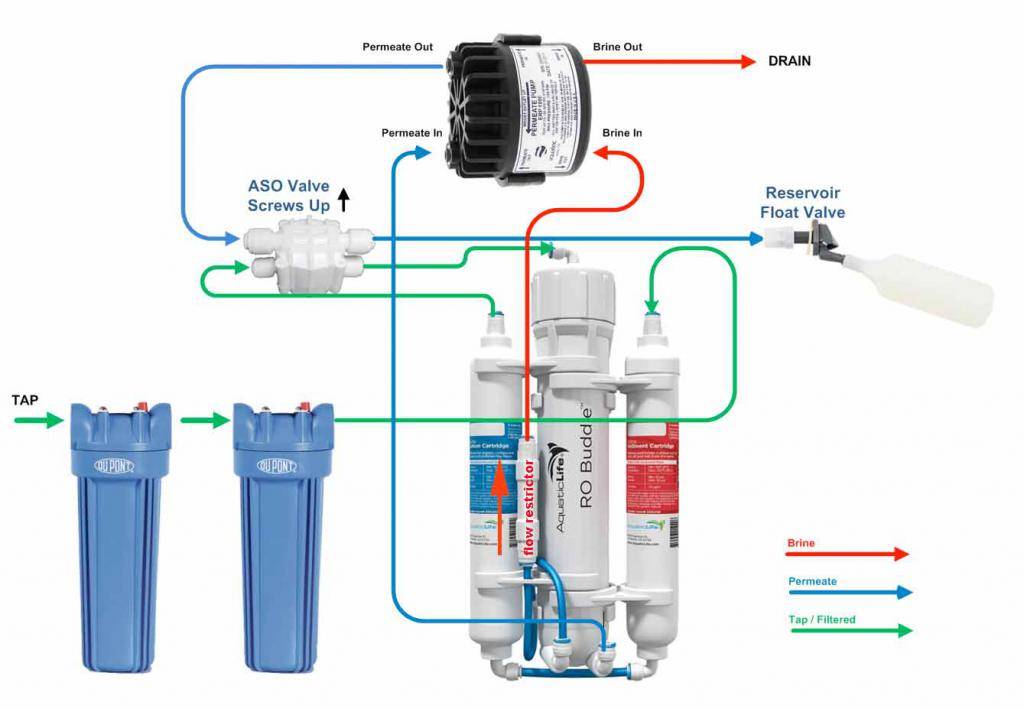
Filter Stage: Tap goes past Two-Stage Chemicals removal, then a Sediment Carbon filter and a Carbon Chemicals filter.
RO: filtered water passes through RO Membrane, Brine "pumping" the passive permeate pump through a flow restrictor, providing hydraulic pressure to force water to permeate the RO membrane increasing efficiency.
Automatic Shutoff Valve (ASO Valve) controls water flow, shutting it if permeate water cannot flow to the reservoir because float valve is closed (reservoir full). Position seen in diagram: screws pointing upwards.
Permeate Pump Here's a diagram (original is a really cool animated gif) on how the permeate pump works taken from see the superb explanation at purewaterproducts

RO Membrane Flushing
You can easily add a manual flushing valve, by removing the flow restrictor from RO Buddie, and placing it on the open tubes below the valve fittings of the following assembly, and then the original tubes into the Y fittings:

Valve handle would be pointing downwards while opened. Flow Restrictor flow should be towards the right in this picture.
Normal Operation: Valve shut off. Flush: Open valve for a minute, then return to closed to return to normal operation.
Links:
- RO Buddie Check its install video, really easy. Another install video.
-Filter housings, Filter Kit and Stainless steel cartridge housings fitter. (These will go before RO Buddie tap water intake).
- Permeate pump (Proper Permeate Pump for RO Install video).
- ASO Valve Float Valve Install Video: Using a float valve to make your DIY reservoir.
- Flushing Fittings cheaply available in amazon too. (operating position should be closed!)
Overall, around $100.
Note: AQUATEC-ERP-1000 makes some clicking noise, this is normal and in fact its regularity gives an idea of the filter status (clicking becomes erratical when filters are clogged).
If this is a concern, the AQUATEC-ERP-500 seems to be quieter (less productive though).
Reverse Osmosis principle of operation: When pressurized water is applied to an RO membrane, only (almost) pure, clean water is capable or permeate it, whereas solids and chemicals dissolved in water are rejected into brine.
So, permeate = clean, brine = waste.
Rationale: You can assemble your own RO System for cheap, no need for a 5-6 stage "drinking water" unit (you don't need those extra 2 stages nor a pressurized tank or faucets);
Filter Stage: Tap goes past Two-Stage Chemicals removal, then a Sediment Carbon filter and a Carbon Chemicals filter.
RO: filtered water passes through RO Membrane, Brine "pumping" the passive permeate pump through a flow restrictor, providing hydraulic pressure to force water to permeate the RO membrane increasing efficiency.
Automatic Shutoff Valve (ASO Valve) controls water flow, shutting it if permeate water cannot flow to the reservoir because float valve is closed (reservoir full). Position seen in diagram: screws pointing upwards.
Permeate Pump Here's a diagram (original is a really cool animated gif) on how the permeate pump works taken from see the superb explanation at purewaterproducts
RO Membrane Flushing
You can easily add a manual flushing valve, by removing the flow restrictor from RO Buddie, and placing it on the open tubes below the valve fittings of the following assembly, and then the original tubes into the Y fittings:
Valve handle would be pointing downwards while opened. Flow Restrictor flow should be towards the right in this picture.
Normal Operation: Valve shut off. Flush: Open valve for a minute, then return to closed to return to normal operation.
Links:
- RO Buddie Check its install video, really easy. Another install video.
-Filter housings, Filter Kit and Stainless steel cartridge housings fitter. (These will go before RO Buddie tap water intake).
- Permeate pump (Proper Permeate Pump for RO Install video).
- ASO Valve Float Valve Install Video: Using a float valve to make your DIY reservoir.
- Flushing Fittings cheaply available in amazon too. (operating position should be closed!)
Overall, around $100.
Note: AQUATEC-ERP-1000 makes some clicking noise, this is normal and in fact its regularity gives an idea of the filter status (clicking becomes erratical when filters are clogged).
If this is a concern, the AQUATEC-ERP-500 seems to be quieter (less productive though).
Attachments
gr8fulguitr
Active member
DIY RO System 100% Automated and Passive thought for municipal waters:
Overall, around $100.
I need to review this when I get a chance I may be back with question?
Thanks. Just what I needed

I live in a small metro area, inner city. My water causes problems. I have done diy distilled on the stove top to get 2-3 liters in 4-5 hours, maybe longer.
My ACE seeds like good clean water.
Sure gr8fulguitr!
An user in amazon modded the filter housings to fit a pressure gauge on each, to have a glance on the filter "status":
Drilling and tapping a 1/4" NPT hole in the top of the housing to install lead-free 0-100 PSIG gauges



An user in amazon modded the filter housings to fit a pressure gauge on each, to have a glance on the filter "status":
Drilling and tapping a 1/4" NPT hole in the top of the housing to install lead-free 0-100 PSIG gauges
Attachments
Cuts
Cuts
This "rooting method" (coco + EM-1) takes more time than clonex + typical domed cloners, but requires much less fuss and works almost in "auto pilot", no need to vent regularly, etc.
Noticed Oaxaca '79 x Panama cuts started to "consume" some of their leaves, so had a peek at his feet:
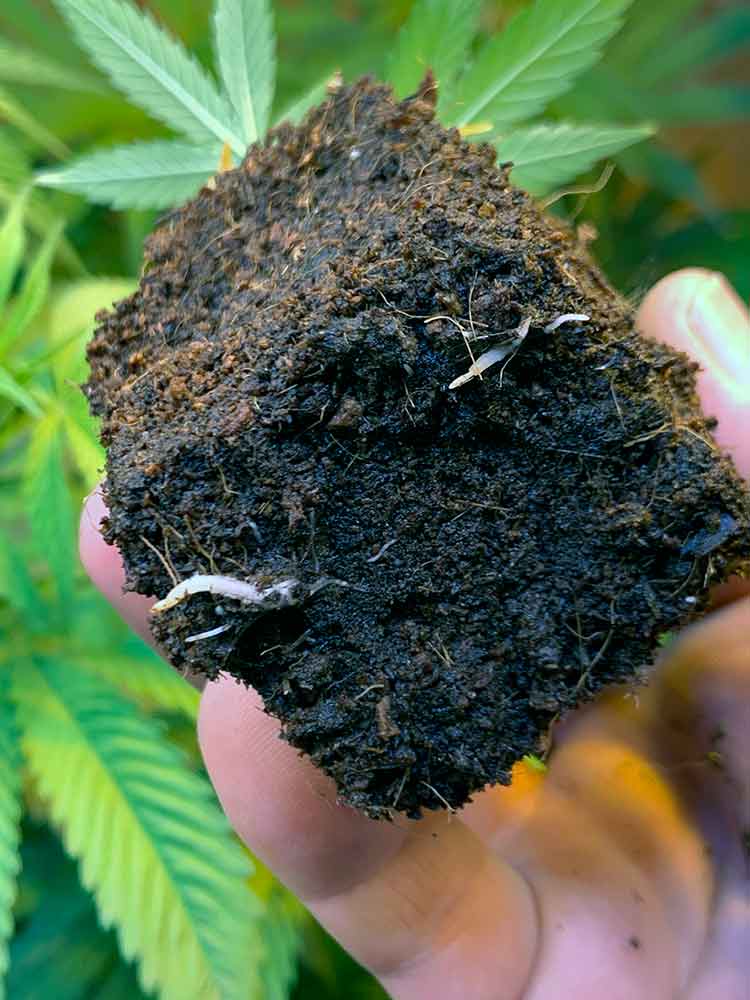
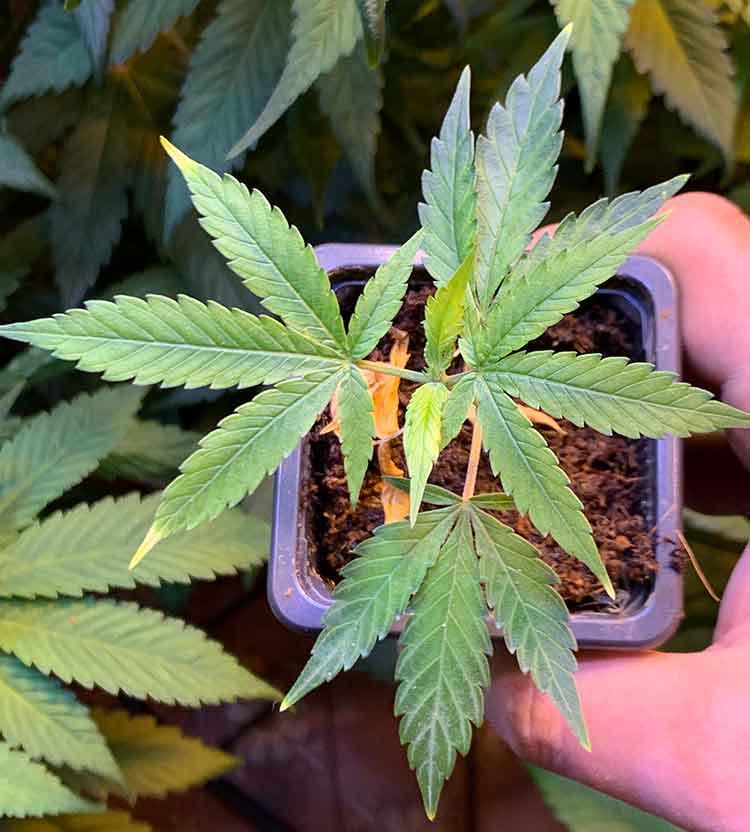
Smaller cuts seem to do better/faster than bigger ones.
Will keep the cuts inside the cuts tent in order to keep them in stasis not to outgrow it...
Cuts
This "rooting method" (coco + EM-1) takes more time than clonex + typical domed cloners, but requires much less fuss and works almost in "auto pilot", no need to vent regularly, etc.
Noticed Oaxaca '79 x Panama cuts started to "consume" some of their leaves, so had a peek at his feet:
Smaller cuts seem to do better/faster than bigger ones.
Will keep the cuts inside the cuts tent in order to keep them in stasis not to outgrow it...






